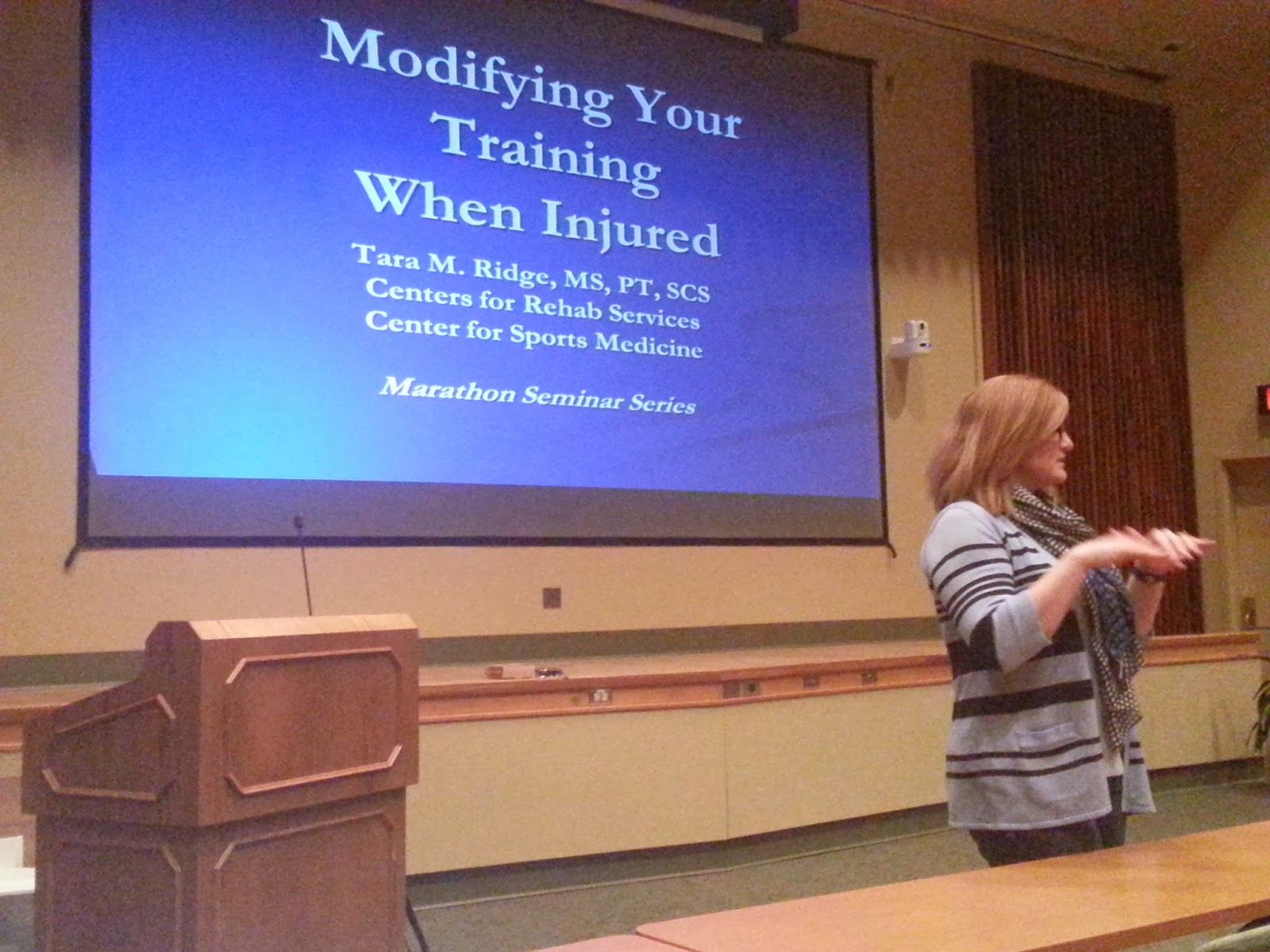Tara Ridge opened with a question to the crowd of Dick’s Sporting Goods Pittsburgh Marathon entrants Saturday: “How many of you are injured?”
One of every 10 raised a hand. And it was still 84 days until the race. Far more training left to do. Hundreds of miles yet to go.
Interesting thing about pain in runners: It often causes them to change their stride or gait, resulting in even more injuries, so Ridge, M.S., P.T., counseled the runners attending the second UPMC Sports Medicine seminar for 2014 marathon and half-marathon registrants.
She broke down what she called Good Pain (general soreness, discomfort and stiffness treatable at home) vs. Bad Pain. The latter is the pain that keeps a runner – or anyone athletic – awake at night, the pain that grows progressively worse. . . and then the pain that forces a conscious or even unwitting alteration in a running stride.
“That’s probably the most common mechanism of injury that brings somebody into our clinic,” said Ridge, a Sports Medicine physical therapist and director of the PT residency program. “For instance, on those icy sidewalks, they start to toe in a little bit. . . so they bring the stride in (to avoid slipping), and what happens is now you load the inside of your knees.” Presto, patellofemoral pain.
Granted, months of training for a 13.1- or 26.2-mile run will foster aches and pains, the wintry mix of Pittsburgh precipitation and c-c-c-c-cold notwithstanding.
“We’re going to expect some pain, right? It doesn’t seem normal to throw out 30 miles on the lower back, hips and ankles,” she said.
So Ridge offered pointers for modifying training to address injuries and recover in time for raceday:
- Analyze your running program for what might cause injuries – such as a surface too hard or soft, a track that angles for drainage, or icy/wet weather conditions. Make adjustments accordingly.
- Recognize the difference between fatigue/pain vs. injury. If it goes away with 20-minute intervals of heat or ice for two hours – and try freezing water in a small paper cup for pinpoint icing – then it’s the former. If you can modify the workout to run or cross-train below the threshold of pain, do it for a week. If neither of those works, it’s time to rest. Failing all that, and the pain persists, see a sports-medicine professional.
- Go on a RICE diet for inflammation – Rest, Ice, Compression, Elevation.
- Gradually warm up and cool down, with a good stretch at the workout’s end.
- Cross-training for the cardiovascular system should be a staple for every runner and a healthy substitute as part of pain-modification programs: “So if you need to dial it down for a week, your body is going to come back strong,” she said.
- Avoid errors in a heavy training regimen by: balancing the volume, intensity and recovery. In other words, mix long runs with short runs and/or cross-training, increase rest and recovery at the same time you suddenly increase the mileage total, plus be wary of repetitive uphill running – which, admittedly, may be a difficult task around Western Pennsylvania’s topography.
Also at the seminar, Ian Schreckengost of True Runner, spoke about the need for the right footwear and how a runner can get his or her gait, foot and arch measured and fitted properly. And Steel City Road Runners coach John Kissel offered advice for the speed-strength phase of training through February and March, trying to run faster than goal race pace (two minutes of a fast run followed by a two-minute recovery job, five times per run and three times per week). For the race-preparation phase in March and April, he said, each runner should devote one-third to one-half of his or her race length to goal race pace.










